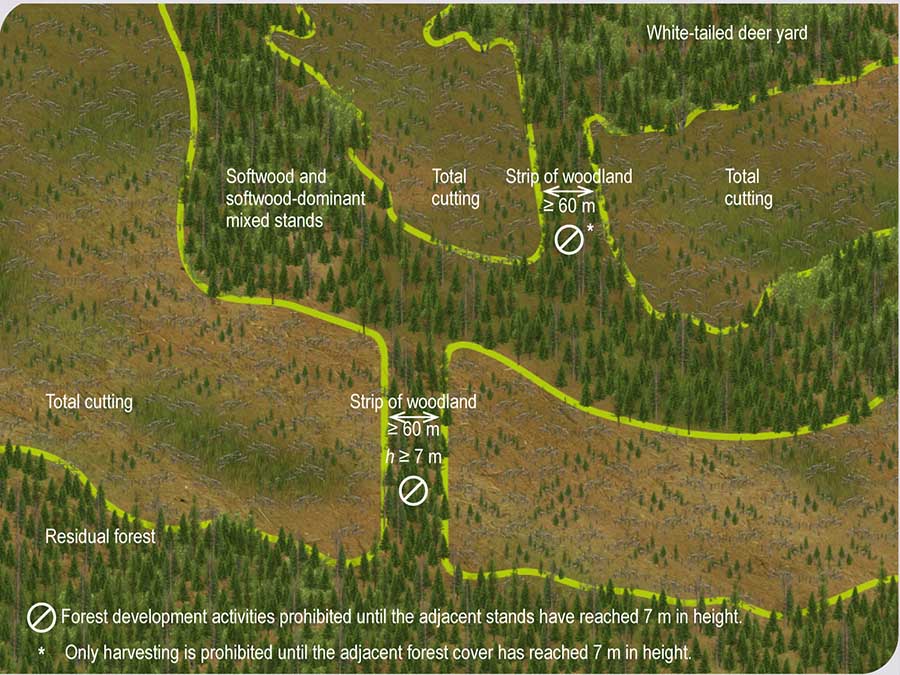Chapter IV – Wildife habitat protection
Division II – Strips of woodland
§1. White-tailed deer yards
Section 52
A strip of woodland at least 60 m wide and at least 7 m high linking a white-tailed deer yard to the residual forest must be preserved and kept in place until the adjacent stands have reached an average height of 7 m.
No forest development activity may be carried out in that strip of woodland.![]()
1
Objective
- To allow wildlife to move around by maintaining connectivity between its habitat and the neighbouring residual forest
Additional information
It is important to note that the definition of the term “forest development activity” in section 2 of the Regulation means that the standards set out in sections 3, 5, 19 to 22, 47, 50, 52, 54, 55, 57 and 59 do not apply to the repair, maintenance or closure of forest roads or to the control of fires, insect epidemics and cryptogamic diseases.
It should also be noted that section 53 of this Regulation allows the holder of a forestry permit issued for public utility purposes not to apply the conditions set out in this section. Section 53 clarifies the conditions of authorization.
Figure 52 Strips of woodland connecting a white-tailed deer yard to the residual forest or separating two areas of total cutting in softwood and softwood-dominant mixed stands within a white-tailed deer yard
In softwood and softwood-dominant mixed stands within a white-tailed deer yard, a strip of woodland at least 60 m wide must be preserved and kept in place between 2 areas of total cutting until the dominant forest cover in those cutting areas has reached an average height of 7 m.![]()
2
Objective
- To allow wildlife to move around by maintaining connectivity between its habitat and the neighbouring residual forest
Additional information
The term “white-tailed deer yard” refers to an area where white-tailed deer gather in winter. The terms “concentration area” and “wintering area” (“ravage” in French) are also commonly used to refer to a white-tailed deer yard. If the white-tailed deer population is to be maintained in Québec, access to good quality wintering areas is essential. The Guide d’aménagement des ravages de cerf de Virginie  (available in French) was prepared to help forest managers improve the quality of white-tailed deer winter habitats when drawing up development plans in deer yards. Among other things, the Guide sets out development principles for deer yards to help ensure that travel corridors and canopy components offering shelter and food are maintained when forestry activities are carried out.
(available in French) was prepared to help forest managers improve the quality of white-tailed deer winter habitats when drawing up development plans in deer yards. Among other things, the Guide sets out development principles for deer yards to help ensure that travel corridors and canopy components offering shelter and food are maintained when forestry activities are carried out.
Figure 52 Strips of woodland connecting a white-tailed deer yard to the residual forest or separating two areas of total cutting in softwood and softwood-dominant mixed stands within a white-tailed deer yard

